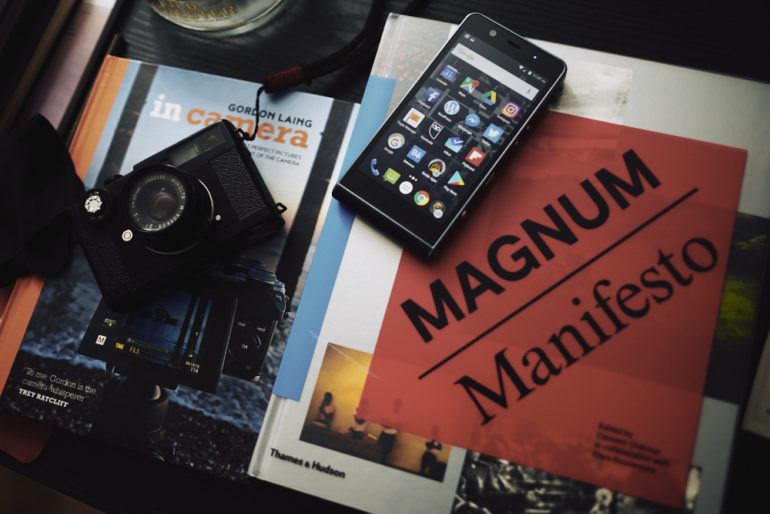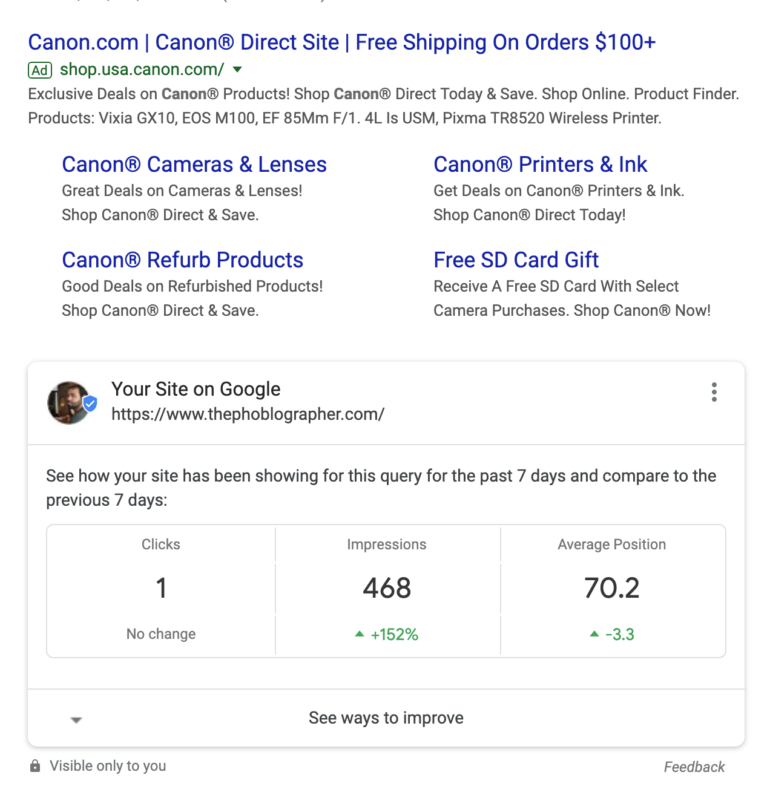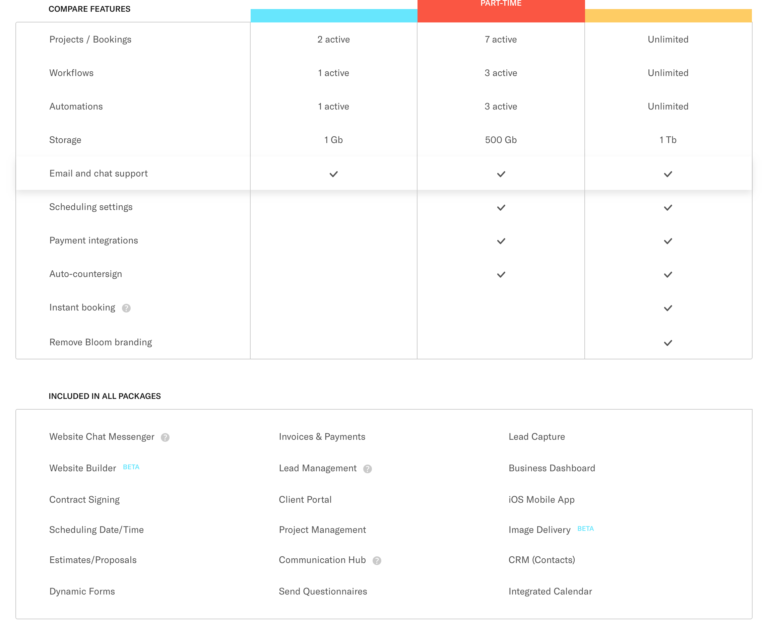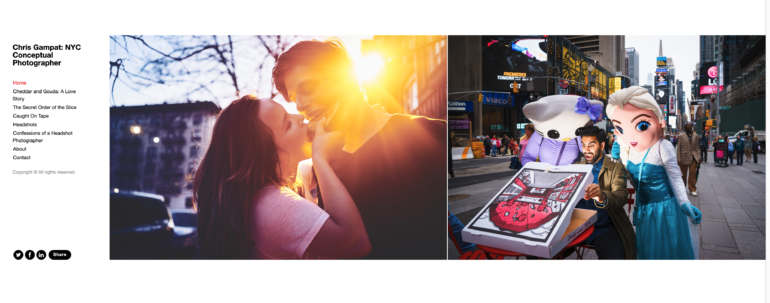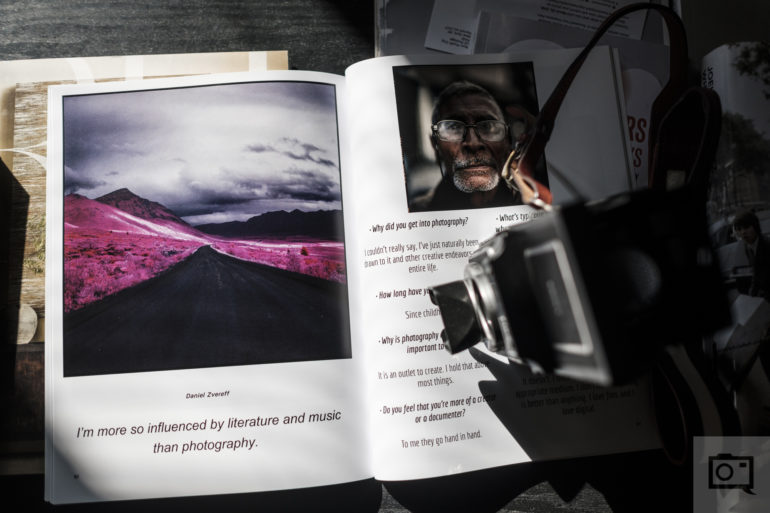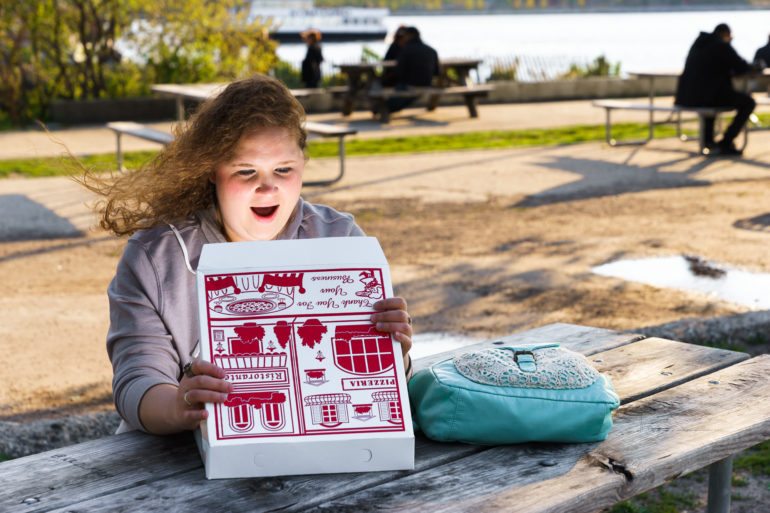Photographers: You’d be shocked at what the $2,000 for a lens can do to help improve you instead.
GAS: lots of photographers have it and many can understand the need and benefit of getting a brand new lens that can render all the bokeh. But after a while, you’re pretty well saturated and set in the gear you’ve got. Eventually, you realize that you’re the one who takes the pictures and not necessarily your camera. And you’ll end up at a point where you want something, but don’t need it. That’s fine–satiate your wants as much as is reasonable. But when you want things, you’ll start to realize how much of your money can be invested into things that are bound to make you more money: that’s more about doing something for yourself as you grow as a photographer. Here are just a few.
Google Adwords
These are small, but Google Adwords can help out a whole lot. When someone goes to look for certain photographers, they type in a specific set of keywords. Figure out what someone would need to type in order to find you. Years ago, I used to compete for “NYC Wedding photographer” but these days the site has such high ranking due to our content that I don’t lose sleep over this kind of stuff. Of course, you probably don’t manage an international staff and output the amount of content we do each day. So as a result, you’ll need to pay for adwords. Beyond this idea is the fact that you can research what is being typed in to find photographers like you. Then you can target those words.
Before you do any of this, it’s a good idea to ensure that you’ve got your photographic identity fully realized. It makes no sense if you’re a street photographer looking to target the wedding industry. What this requires is a lot of careful thought about who you are. There’s no problem with being just a hobbyist who doesn’t care about any of this, but if that’s the case you should also ask yourself why Instagram matters to you. Everyone tries hard to beat the algorithm but there is no really good reason to do this at all. Instead, what you can do is just try to create some organic content on a platform that you call your own. We’ll get to that in a little bit.
Business Management Software
Photographers who want to do things like automatically book meetings with potential clients, or set up headshot sessions, can use a variety of different business management software tools to do this. One option is called Bloom. Formerly PICR, this is a business management platform that lets you incorporate a whole bunch of things into your website in a pretty straightforward fashion. Then there are a number of other tools like Milanote. Milanote is a platform that lets you micromanage specific projects and track their progress. Both of them are available at very affordable prices that are more than justified for different types of business, and scale accordingly. For Bloom, the most you end up paying is less than $50 a month. When you look at it from a ‘return on investment’ perspective, you’ll make that back with one photography session.
A Functional and Beautiful Website
One of the biggest things photographers complain about is the algorithms on social media that find a way to completely ruin their efforts. With a dedicated website, and by using your tactics on social media to drive traffic to that website, you can attract more people to the very best of your photography. Squarespace is very popular, though to be quite frank they’ve demonstrated they don’t care much about the photographers who built their business up. Other options like PhotoShelter and Format are much better for building websites. Then there are platforms that allow even more control, like WordPress. Of course, with more control comes more complications. Just make sure your website looks great on desktop and mobile.
Physical Mailers
PS: Emulsion is a higher-end zine we made with Blurb, and it’s very good.
If I can be 100% honest, the best thing a photographer can do is send out a physical mailer. A small zine that is well laid out, prints, calendars etc. make for great decorations for a potential client and are a much different way to market. It removes people from their phones and screens. Instead, it forces someone to pay attention (with no notifications popping up to interrupt them) as they interact with the print. These can be a variety of options beyond zines, postcards, books, etc. However, when you send these out, know that they’re an investment and that you should specifically target them to certain organizations and people. Then use those to get a meeting set up.
Business Cards
MOO is fantastic for business cards and they arguably have the monopoly on business cards for photographers. You know those square cards that everyone has had for years? Well there are those and much more. These business cards come in a number of different varieties and sizes. What’s even cooler is MOO’s latest options for business cards which include built in NFC chips. When using these you can do what I like to call the party trick: you hold the card up the NFC reader on someone’s phone and you can program the chip to bring up your contact info. Then they just save the info. It’s a fun trick that, when followed up with genuine conversation, can bring in business.
Food and Drink for Meetings
Some of the best ways to get new business is by having in-person, face to face meetings. Of course, calls can work too. But instead of spending money on a new lens or camera, you can put that money towards business in the form of dinner, lunch, or coffee with a potential client. If you keep going to the same spot, the staff may eventually give you a discount for being a frequent customer. It’s good business on their end to do this, but don’t ever feel like you’re entitled to it.
A Portfolio Review
Have you ever had your portfolio critiqued by someone that is a million times more professional than folks online? There’s a big difference between someone who comments only in emojis and someone who gives you thoughtful feedback on how you can improve on your portfolio and make it stronger. In addition to that, there are the added networking benefits of putting your work in front of someone else. Usually these portfolios are printed out. To that end ,you need to select the best images by yourself. After that, you’ll hear from a professional about whether or not your images are worth checking out.
Business Insurance
“Like any insurance, photography insurance is when you pay a fee, usually on a monthly or yearly basis, that protects you from having to pay a lot of money if something goes wrong related to your business. Photographer insurance can cover anything from damage to your photography equipment to injury and lawsuits. There are a lot of upfront expenses when it comes to starting your own photography business, like investing in a camera and accessories, business cards, website hosting and more.”
Do you have business insurance as a photographer? There is obviously gear insurance, but what about if someone sues you and your business? You could lose everything, and if you’re serious about ensuring that you don’t get into a dicey situation, it’s a good idea to pay insurance. The best thing to do is to be mindful that you don’t get into a situation where you’ll potentially get sued in the first place. That requires you to act like and think like a business owner with a lot of analysis. To liken this to a more relatable situation, think about all the things you wouldn’t do if you didn’t have health insurance. Would you take risks more often? Would you be more safe? Apply this mentality to your business. Format has a solid guide to insurance if you want to check it out.
Mental Health
Mental health and managing it is the best thing that a business owner could do. For example, what I do is separate my days by tasks. Monday, Wednesday, and Friday I am creative, while on Thursday and Tuesday I handle the business side of things and more time consuming communications. On Sunday I tie up loose ends. But on top of that I go to yoga several times a week, I meditate almost daily, and I invest heavily in my own health. Part of this means walking away from photography at times to play my bass guitar or my violin. Other times it means that I spend a rainy day inside playing video games or out exploring and finding new situations with friends. Whatever it takes to keep you focused and on task, do it.


